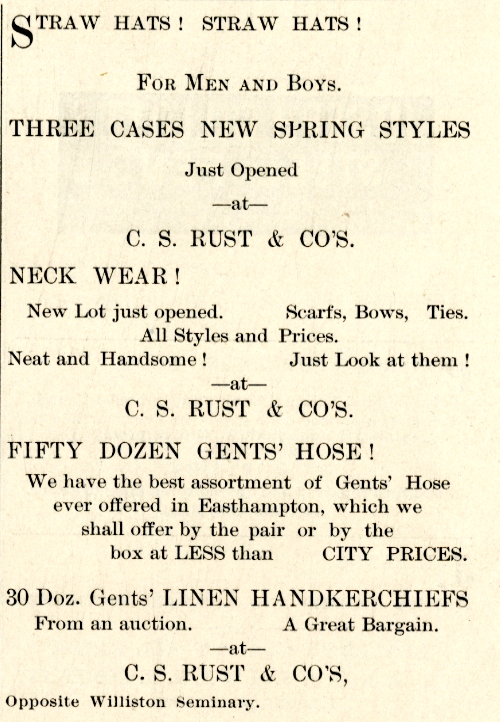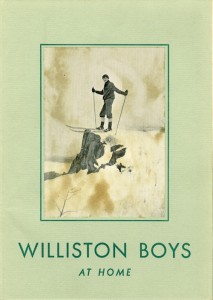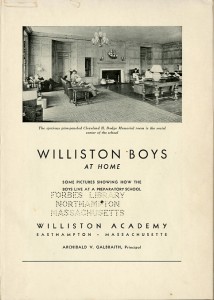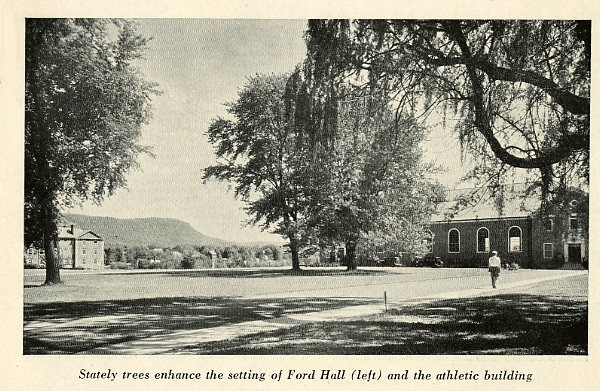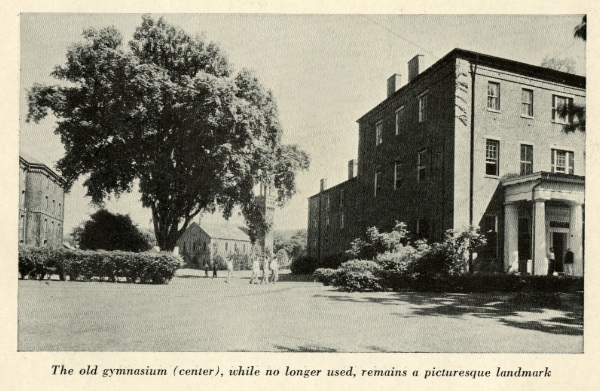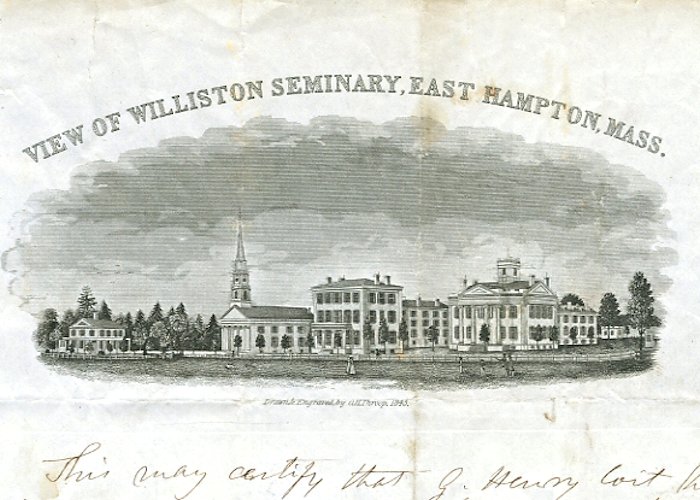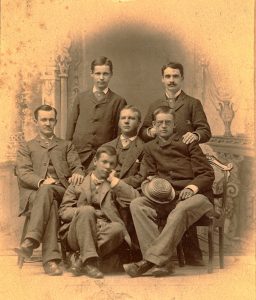
Surely “cater to your customers” must be the most fundamental principle of marketing. When Williston Seminary’s campus newspaper, The Willistonian, made its first appearance in March of 1881 (making it, 118 years later, the oldest continuously published secondary school paper in the United States), its student editors sought to finance their enterprise by selling advertising. With a couple hundred teenage boys occupying the campus, local merchants sought to appeal to their wallets. Logically then, we can open a window into an 1880s adolescent’s mind by examining how, away from home and parental supervision, he wanted to spend his (or his father’s) money — or how local merchants wanted him to spend it.
Early issues of The Willistonian came in an advertising wrapper. The “front page” was actually inside. Because the paper was also sold by local merchants, a portion of the advertising was aimed at the general public. And industries like Glendale Elastic Fabrics — one of the late Samuel Williston’s enterprises — may have purchased space out of a sense of obligation to Samuel’s widow Emily, if not to the school.
The advertisements below are selected from the first three years of The Willistonian, 1881-1884.
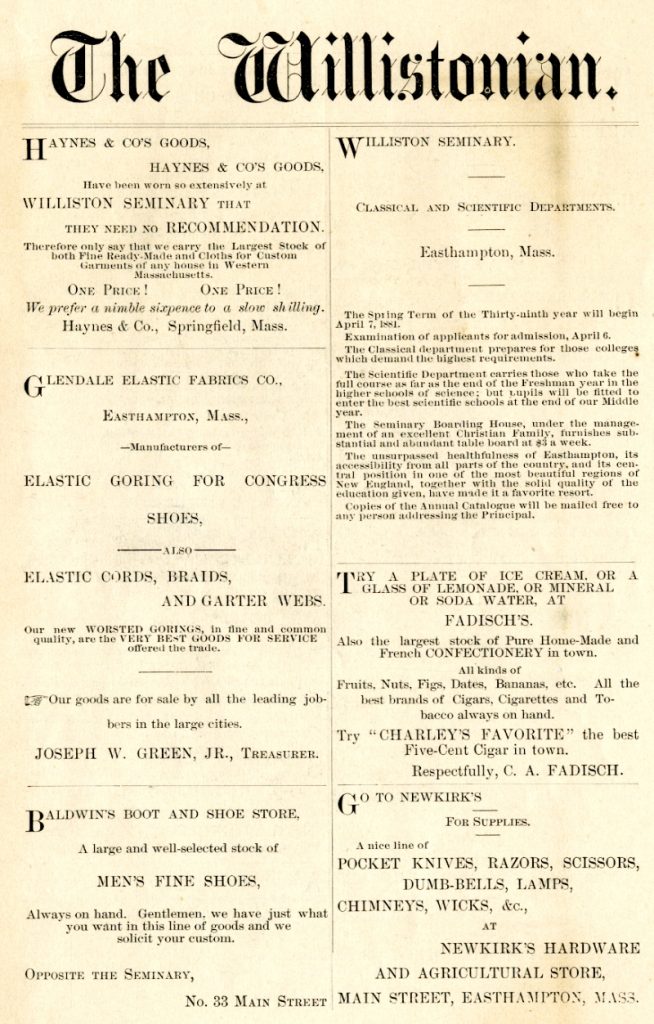
“Opposite Williston Seminary” meant Shop Row, on Main Street. C. S. Rust appealed to young men’s fashion sensibilities.
